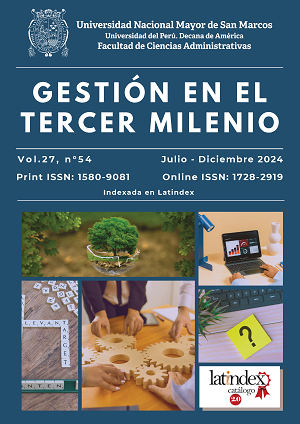Impact of works for taxes on the improvement of the quality of educational service: a case study in the District of Huaral, 2023
DOI:
https://doi.org/10.15381/gtm.v27i54.27928Keywords:
quality, equipment and furniture, infrastructure, works for taxes, educational serviceAbstract
The Works for Taxes modality has emerged as an innovative strategy to address infrastructure deficiencies in Peruvian schools in the context of education. This modality, regulated by Act 29230, establishes a regulatory framework that promotes collaboration between the public and private sectors, facilitating the financing and execution of initiatives aimed at the optimization of educational facilities. However, it is essential to analyze the real impact of this mechanism on the quality of education offered to the population, beyond the construction or improvement of physical conditions. Therefore, the main objective of this article was the analysis of the impact of works for taxes on the improvement of the quality of educational services in the district of Huaral during the year 2023. Using a descriptive correlation study with a quantitative approach and non-experimental design, the study involved a population of 100 employees and a sample of 80 employees chosen by simple random sampling. The results showed a strong positive correlation (rho = 0.854**) between works for taxes and the improvement of the quality of educational services. This indicates that a greater implementation of these works is related to a better perception of quality by educators and administrators. However, although works for taxes are effective in improving the quality of education, their success is dependent on proper management and efficient allocation of resources in accordance with local needs.
Downloads
Published
Issue
Section
License
Copyright (c) 2024 Ligia Elena Changana Solis

This work is licensed under a Creative Commons Attribution 4.0 International License.
THE AUTHORS RETAIN THEIR RIGHTS:
(a) The authors retain their trademark and patent rights, and also over any process or procedure described in the article.
(b) The authors retain the right to share, copy, distribute, execute and publicly communicate the article published in Gestión en el Tercer Milenio journal (for example, place it in an institutional repository or publish it in a book), with acknowledgment of its initial publication in the Gestión en el Tercer Milenio.
(c) Authors retain the right to make a subsequent publication of their work, to use the article or any part of it (for example: a compilation of their work, lecture notes, thesis, or for a book), provided that they indicate the source. of publication (authors of the work, magazine, volume, number and date).






